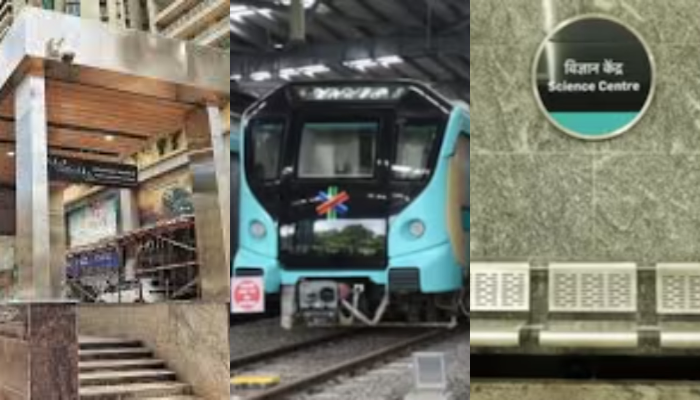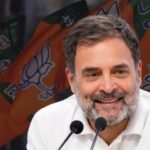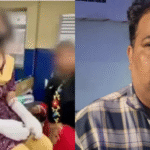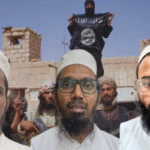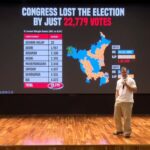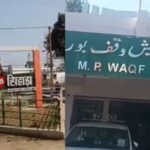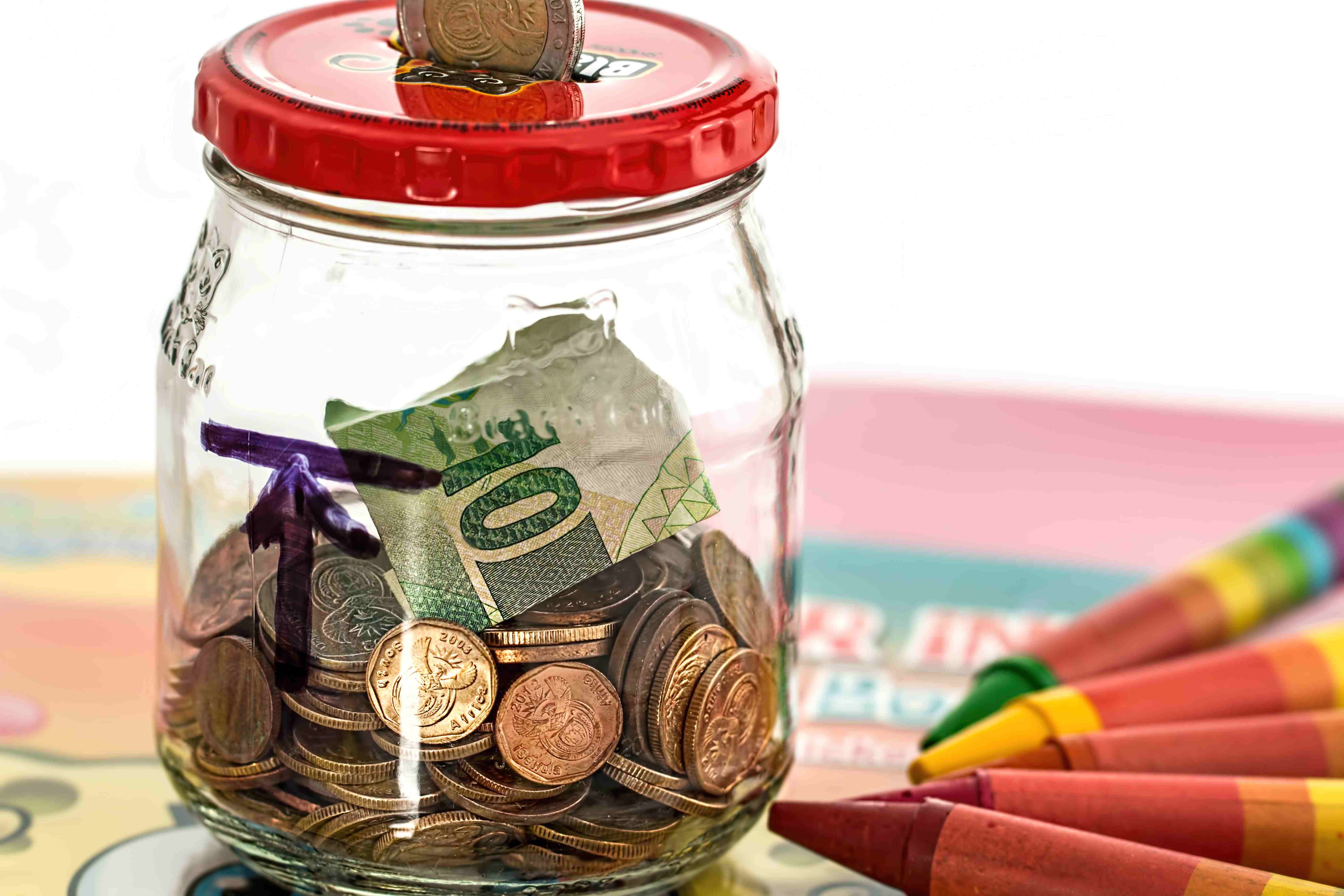Mumbai, one of the most inhabited cities in the most populous nation in the world, suffers significant environmental and transit issues. Hence, the launch of Mumbai Metro Line 3, referred to as the Aqua Line, marks a significant advancement for the area’s urban mobility. Prime Minister Narendra Modi is scheduled to inaugurate it on 8th October. This represents a critical turning point in the development of the transit system.
The initial phase of the Aqua Line connecting Aarey and BKC was inaugurated in October 2024. Subsequently, it was extended to Acharya Atre Chowk in May 2025. Now, this final segment which runs from Science Museum Station to Cuffe Parade Station includes 11 major underground stations. The line has been gradually opened over the years to allow commuters to begin travelling at least half the distance.
Mumbai Central, Grant Road, Girgaon, Kalbadevi, CSMT, Hutatma Chowk, Churchgate, Vidhan Bhavan, Cuffe Parade and Science Centre fall on the third and final section of Mumbai Metro-3. The metro corridor measures 33.5 kilometers from Aarey in the north to Cuffe Parade in the south and consists of 27 stations. It is constructed by the Mumbai Metro Rail Corporation Limited (MMRCL). The Aarey Depot is the only part of the line that is not underground.
This phase which cost Rs 9,785 crore, concluded the Metro 3 corridor. Originally envisioned in 2011, the project started in January 2017 under Devendra Fadnavis government. The initial estimate of Rs 23,136 crore rose to Rs 37,276 crore over this time. 60% of the finance was provided by the Japan International Cooperation Agency (JICA) with the remaining from a 50:50 joint venture between both central and state governments.
It’s almost a miracle that a project as complex as Mumbai Metro Line-3 ( which had to tunnel through the very belly of one of the world’s most congested cities) is set to be inaugurated in its entirety.
Seeing how even relatively simple flyover or underpass projects in my city… pic.twitter.com/0Y75YVKZoa
— Prasanna Viswanathan (@prasannavishy) October 7, 2025
Engineers had to negotiate historic buildings, constrained streets and delicate soil in South Mumbai. They used techniques like controlled microblasting and keyhole tunnelling in places like Kalbadevi, Girgaon and Fort to prevent damage to structures that were 100 years old. Notably, there was no permanent eviction of residents in spite of these difficulties, instead, over 730 families received in-situ rehabilitation by the MMRCL.
A revolution in transportation
Aqua Line is estimated to carry up to 17 lakh passengers each day, greatly relieving the strain on Mumbai’s current transportation system. This entirely subterranean route is expected to revolutionise commuting by providing a faster and more effective substitute for the city’s conventional transportation options.
Metro Line 3 provides service to some of the most important business, residential and commercial areas in Mumbai. Additionally, it offers airport access to the domestic and international terminals of the Chhatrapati Shivaji Maharaj International Airport, as well as commercial and corporate centres such as Cuffe Parade, Nariman Point, Fort and Bandra Kurla Complex (BKC) alongside transportation hubs like Mumbai Central, Chhatrapati Shivaji Maharaj Terminus (CSMT) and Churchgate.
Likewise, the city’s central regions would be more easily accessible from residential and industrial zones like Aarey and SEEPZ (Santacruz Electronics Export Processing Zone). The heavily populated regions of Dharavi and Sitaladevi would also gain from better public transport options which would reduce the need for crammed local buses and trains.
First time in India 17 highly mechanised Tunnel Boring Machines (TBMs) were working simultaneously & all these #TBMs were named after various historic rivers in Maharashtra such as #Surya, #Vaitarna, #Tansa, #Krishna, #Tapi, #Godavari & #Wainganga. pic.twitter.com/51H9JAnha8
— MumbaiMetro3 (@MumbaiMetro3) November 30, 2022
The metro line is expected to drastically cut down on commuting time, taking only 54 minutes to travel from Cuffe Parade to Aarey (JVLR) during peak hours. It is predicted to reduce traffic by 35% and fuel consumption by about 3.54 lakh gallons per day by lowering the number of cars on the road.
The metro line is also going to improve connectivity throughout the city by integrating with current and planned metro lines, leading to a thorough and effective network of public transport.
It will join Line 1 (Blue Line) at Marol Naka, Line 6 (Pink Line) at Aarey JVLR (Jogeshwari-Vikhroli Link Road), Line 7A (Red Line) and Line 8 (Gold Line) at CSMT, Line 2B (Yellow Line) at BKC as well as Western Line at Dadar, Mahalaxmi, Mumbai Central, Grant Road and Churchgate.
“The Aqua Line is not just about speed, but about accessibility, safety, and dignity in commuting. Once fully operational, the Aqua Line will transform Mumbai’s public transportation, ease road congestion, and offer a more sustainable alternative for Mumbaikars,” an MMRCL official expressed, reported The Free Press Journal.
Dedicated women-only cars, preferential seating for the elderly and disabled, along with a strong monitoring system at all stops and trains to improve passenger safety are just a few of the commuter-friendly features that Metro Line 3 offers in addition to better connectivity.
Pocket-friendly fare
The fare structure is intended to be reasonably priced, with rates ranging from Rs 10 to Rs 60 (or 70). The tariff chart stated that Rs 10 is the charge up to 3 kilometre and Rs 20 between 3 to 12 kilometre. 12 to 18 kilometre on a medium-distance trip would cost Rs 30 and Rs 40 between 18 to 24 kilometre. Fares have been set at Rs 50 for 24 to 30 kilometre and Rs 60 for 30 to 36 kilometre for longer trips.
The maximum rate for trips longer than 42 kilometre has been set at Rs 80. However, it is not applicable to the existing section of Metro 3. The National Common Mobility Card (NCMC), Paper QR and WhatsApp e-tickets are additional options for commuters seeking a smooth transit experience.
This makes it far less expensive than taxis, which charge more than Rs 700 for the same journey. The new system avoids surface-level traffic and offers a dependable, air-conditioned high-frequency alternative.
The MMRC announced a Transit-Oriented Development (TOD) strategy to use non-fare revenue to stimulate economic development around the metro line. It has already paid Rs 3,472 crore to the Reserve Bank of India for a 4.16-acre land at Nariman Point which is near the metro line and has since made use of the area.
A remarkable achievement despite multiple challenges
On 7th October of last year the 12.69 kilometer section between Aarey Colony and Bandra-Kurla Complex (BKC) was opened to public. On 9th May, the 9.8 kilometer from BKC to Worli was inaugurated. The 10 kilometer stretch between Worli (Acharya Atre Chowk) and Cuffe Parade will now be available from 8th October.
Hence, the 33.5 kilometer corridor took 8 years and 9 months to complete. Meanwhile, more than 15,000 workers, engineers, architects, and tunnelling specialists have contributed to it.
Land acquisition is very challenging in Mumbai, one of the world’s most densely populated cities. Due to its complete underground design, Metro-3 required excavation, tunnelling and reliance on ground conditions as well as utility relocations. As a result, the procedure took a long time.
Managing a variety of geology, including water-logged soils, reclaimed land and basalt rock while tunnelling in Mumbai posed a critical hurdle.
The time needed for safety approvals, trials and inspections was another issue. The same was only increased by unforeseen ground conditions, utility relocation, site acquisition, legal and environmental approvals, supply chain delays and contractor coordination.
CM @Dev_Fadnavis was at the First breakthrough of TBM (Tunnel Boring Machine) for 33.5 km long fully underground @MumbaiMetro line 3 (Colaba-Bandra-SEEPZ) at T2, Chhatrapati Shivaji Maharaj International Airport, Mumbai. Minister @Ranjitpatil_Mos too present. pic.twitter.com/5QWrajfBGc
— CMO Maharashtra (@CMOMaharashtra) September 24, 2018
The monsoon is an additional problem for a metropolis like Mumbai. Water intrusion is a serious challenge in the city particularly during the monsoon season and close to the coast.
Moreover, the alignments for the Mumbai Metro 3 went under or beneath slums, busy marketplaces and historic structures, requiring more attention and time. The possibility of structural damage from any underground development near historic structures could lead to public or legal opposition. Hence, the hassle is spiked by litigation from locals, activists or other opponents.
Sources revealed, “Relocating underground utilities, acquiring land, and securing environmental and legal clearances added to the time taken. The process also required coordination with multiple agencies and utility providers making execution more tedious. In many sections, the metro line passed beneath or near heritage buildings, crowded markets, and densely populated slums which demanded extra caution to prevent structural damage. This sensitivity around old and important structures often led to public opposition.”
MMRCL also informed that the project overcame a number of logistical and engineering obstacles, especially when it came to tunnelling through intricate geological formations beneath crowded and historically significant areas. An official voiced, “Working beneath structures in congested areas like Girgaon, Kalbadevi, and D.N. Road required meticulous planning to avoid any impact on existing buildings and utilities.”
Notably, the construction of the metro line employed caution and sensitive techniques to ensure that no heritage sites, including the CSMT station, were harmed. Furthermore, it accomplished a number of milestones in spite of these hindrances. An MMRCL official conveyed that 54.5 kilometre of tunnelling were completed in compliance with international safety regulations.
“At one stage, 17 tunnel boring machines (TBMs) were operated simultaneously marking the largest such deployment in India for an underground metro. Additionally, heritage-sensitive construction techniques were employed near iconic landmarks such as Hutatma Chowk and Chhatrapati Shivaji Maharaj Terminus (CSMT), ensuring minimal impact on the city’s architectural legacy,” the person added.
It was also time-consuming to coordinate with multiple authorities, including MMRCL, Mumbai Metropolitan Region Development Authority (MMRDA), Brihanmumbai Municipal Corporation (BMC), railroads, traffic police, utilities and others.
Therefore, the metro line’s completion was prolonged as a result of technical and environmental complexities in addition to administrative challenges.
Political reasons for the metro line’s delay
There were indeed some authentic reasons for the delay, however, it cannot be overlooked that politics also influenced the extension of the vital project and even raise its costs. It was also pointed out by Prime Minister Narendra Modi in October of last year.
“Metro line 3 began under leadership of Devendra Fadnavis as chief minister and 60% of work was completed during his tenure. However, when Maha Vikas Aghadi (MVA) came to power, they stopped the project out of arrogance, which led to a cost overrun of Rs 14,000 crore. Whose money is that? Is it their money? No, it is the hard-earned money of Maharashtra’s taxpayers,” he charged in a rally in Thane.
Similarly, an intense campaign titled “Save Aarey” was initiated by various channels, social media influencers, activists, actors and NGOs (non-governmental organizations) to halt the construction of the Metro shed in Aarey, in the name of saving trees and environment as common folk carried on suffering through claustrophobic means to facilitate their everyday travel. Aditya Thackeray was made it his pet campaign, trying to stall the Metro shed project in the name of environmental activism.
Predictably, the Maha Vikas Aghadi, led by Uddhav Thackeray, added to the propaganda and made its first decision to move the Metro car shed from Aarey to Kanjurmarg in 2019. “I have ordered to stop the work of Aarey metro car shed project today. Metro work will not stop but till next decision, not a single leaf of Aarey will be cut. I am the first Chief Minister who was born in Mumbai. It is going on in my mind, what I can do for the city,” Thackeray declared shortly after he took over the position.
However, the Bombay High Court had rebuked the government and called the decision fraudulent. The remarks were made because the land was subject to a pending title action and could not be utilised or transferred to another person until the matter was resolved. It was then disclosed that the government was aware that the Kanjurmarg property was under litigation.
Later, the Advocate General of Maharashtra was instructed to submit an application to the Bombay High Court asserting that the government would relocate the shed from Kanjurmarg back to Aarey during the first cabinet meeting of Chief Minister Eknath Shinde and Deputy Chief Minister Devendra Fadnavis in 2022.
Suzuki Satoshi, the Japanese ambassador to India even intimated his concerns about the anticipated “cash crunch” and “significant delay in project timelines” in a letter to Chief Minister Uddhav Thackeray dated 17th February 2021.
He outlined, “During JICA’s detailed fact-finding mission with MMRC, conducted from December 2020 to January 2021, it was recognized that there is a real possibility for MMRC to face fund shortage within the next fiscal year (FY2021) if an additional loan cannot be provided by end of fiscal (FY2020).”
“As a financer of this project, the government of Japan and JICA are strongly concerned that the project would potentially face serious difficulties such as significant delays or stagnation unless the loan is extended in a timely manner,” Santoshi stressed.
The propaganda continued even after the MVA was ousted from power. Aditya Thackeray joined several protests and even lied that the metro network can function without the car shed. According to the former minister, cars only require maintenance every three to four months, thus its is not an essential part of the Mumbai metro.
His antics escalated to the point where the National Commission for Protection of Child Rights (NCPCR) had to intervene due to accusations of his involvement in using children to promote the bogus narrative. Interestingly, the Supreme Court had already rejected the claims yet the propaganda continued unabated.
Conclusion
Despite facing numerous challenges and delays, both political as well as otherwise, this engineering marvel has finally materialized, benefiting not just the residents of Mumbai but also showcasing the technological capabilities of the country.



